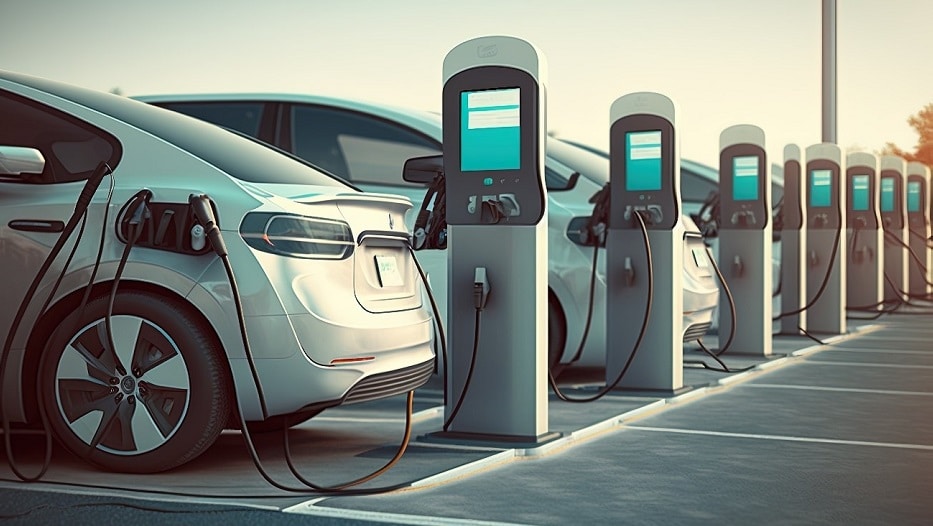Julia Maria Gomez de Avila Segade | 13/04/2023
The automotive industry is committed to helping mitigate the environmental impact of its business. One of the lines of action in this regard has been the electrification of automobiles, which has become a real alternative to the daily use of the internal combustion engine.
Like other strategic sectors, the automotive industry is transitioning to a more sustainable business model. To reduce its environmental impact and to help the global commitment to fighting climate change, both the market and institutions are encouraging the use of electric and hybrid vehicles. As a benchmark in international trade, Mexico seeks to maintain its status by also adhering to the transition policies. “Let’s remember that Mexico is the seventh largest manufacturer in the world and the fifth largest exporter. We don’t just want to retain this leadership – we aspire to improve our position in vehicle manufacturing and sales,” says José Zozaya Délano, Executive President of the Mexican Association of the Automotive Industry (AMIA).
The latest data released by the association indicates that the sector-marked roadmap is being successfully met, albeit slowly. In 2022, 51,065 vehicles with electric technology were sold. Within the framework of the industry, the sale of electric and hybrid vehicles corresponded to 4.7% of the total, which represents progressive growth, but not a significant volume in the automotive fleet.
The challenge of a favorable framework
Although Mexico has made an important commitment to electromobility and the growth in the sale of cars and parts is progressive, Zozaya recognizes that it is important to commit to creating a favorable framework for the industry on a regional scale. “We should be further ahead in the plan to have a public policy on electromobility and clean energy that contemplates the creation of global incentives for the manufacture and sale of these electric cars,” he says.
According to AMIA, in order to achieve sustainable mobility, the promotion of electric vehicles must extend to public transportation, logistics and private cars. This development requires coordinated actions by the public and private sectors that can be promoted with manufacturing incentives and public policies that allow users to access this type of automobile.
The association is very involved in this transformation and the Mexican government is accelerating the process of attracting companies that manufacture electric or hybrid vehicles and industries related to the sector. The positive impact of these initiatives on Mexico’s economic development could be significant
“The environment that hosts these new technologies could receive a very significant investment that would activate the economies of that region. In addition, by reducing pollution, the expenses that this entails for the states and citizens would also be reduced,” assures the Executive President of AMIA.
Some large cities in the country, such as Guadalajara, Mexico City or Monterrey, have a charging network that allows the daily use of electric
Synergies and growth potential
As José Zozaya explains, the automotive sector is immersed in the change of technology to reduce its carbon footprint and, in this endeavor, it converges with other sectors with which important synergies have emerged. “From the energy and industrial sectors, involved in manufacturing, to logistics – which is what moves all the equipment throughout the country – collaboration is very important. As a partnership, we have a very close relationship with the Chamber of Industry and the Chamber of Electric Manufacturing,” he says, adding that these sectors, together with the government, are carrying out important initiatives such as those that concern the location of lithium reserves, a material essential for the manufacture of electric vehicle batteries.
These plans must be accompanied by a charging and support infrastructure in accordance with the traffic potential, a fundamental factor according to various studies that have proven that the development of charging stations in the areas normally traveled by citizens promotes the use of this type of vehicle. “We need to move forward in this aspect, because users are still unsure of the availability of terminals. There are about 1,300 charging stations today, but that’s not enough,” says Zozaya. Some large cities in the country, such as Guadalajara, Mexico City or Monterrey, have a charging network that allows the daily use of electric fleets, but the expert insists that it is also necessary to be certain that it can be reached from one city to another. “We are talking about extensions of 900 kilometers, and even more, and it’s a complex terrain to cover. We are currently developing studies that determine how many are needed and where,” he says.
“We are very optimistic for the future. At AMIA we think this year will be even better than last year”
Another of the fronts on which we are working to successfully fulfill the potential of electromobility in Mexico is the training of potential users. “You have to try to make them understand that we are all going to benefit from this technological change, directly or indirectly,” he says. Despite the significant challenges, the expert’s outlook is positive. “We are very optimistic for the future. At AMIA we think this year will be even better than last year and the numbers for the first months of 2023 show this. Apart from a situation beyond our control that may affect domestic and international markets, we are focused on improving coordination with authorities to encourage investment in the sector. I think that’s very important,” he concludes.
Article collaborator:

José Zozaya Délano, current Executive President of the Mexican Association of the Automotive Industry (AMIA), has more than forty years’ experience in the relationship between private and state-owned companies. His extensive history highlights his collaboration with the rail industry.
If this has piqued your interest, read on… The Global Risk Market in Mexico. Outlook for 2023






